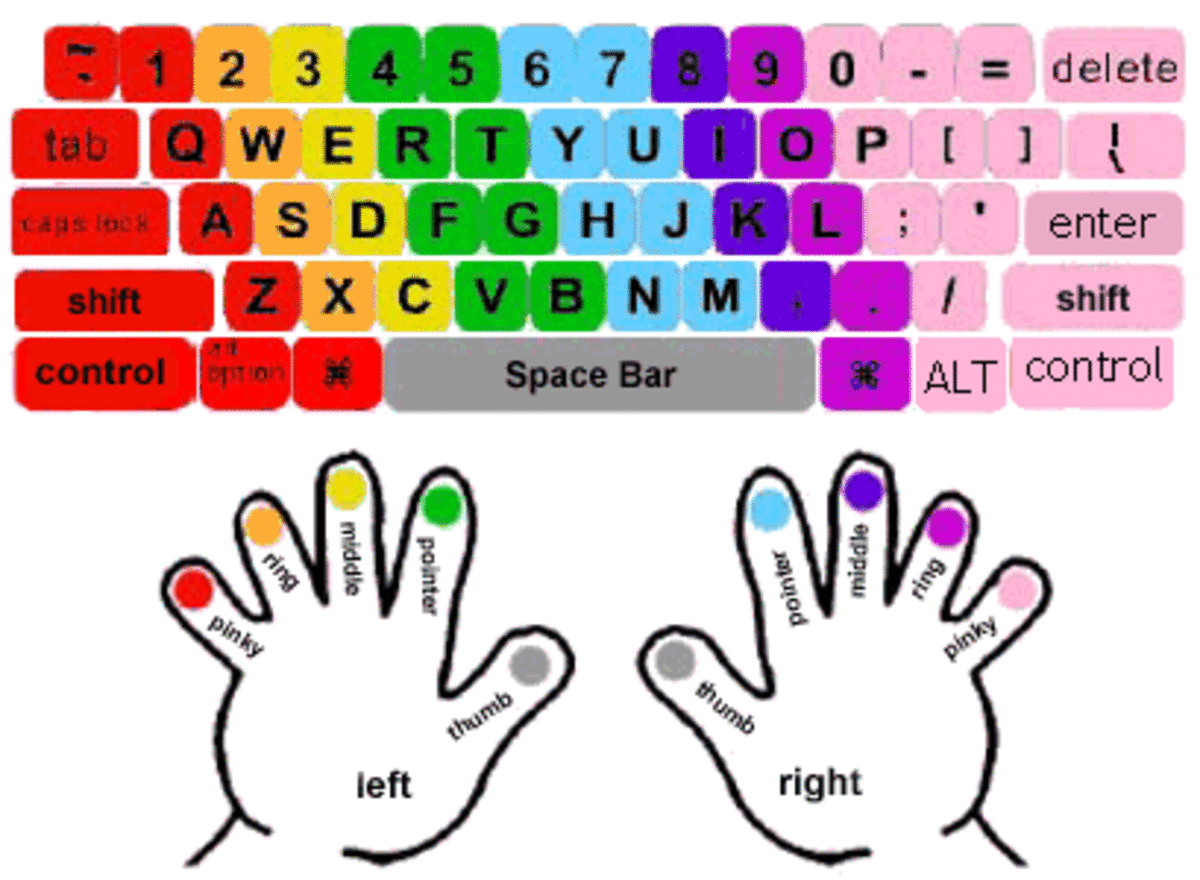

The keyboard and monitor should be at the correct height to prevent strain on the neck and shoulders.Encourage them to maintain good posture and proper alignment while typing to reduce strain on their muscles and joints. It is important to teach children about the value of ergonomics to prevent injuries such as Carpal Tunnel Syndrome, tendinitis, and other musculoskeletal disorders. They can improve circulation, reduce tension and inflammation in the wrist and hand, and increase the flexibility and strength of the muscles and tendons in the fingers and hands. Exercises involve performing repetitive movements with the fingers and hands to help build strength, flexibility, and coordination. Finger exercises can also be beneficial for improving muscle memory and developing touch typing skills.

Consider activities like typing the same letter repeatedly or typing specific words using different fingers to help children practice proper technique. Finger exercises can be particularly helpful for improving muscle memory and increasing typing speed.
It's also important to provide age-appropriate activities that will keep children engaged while reinforcing good typing habits. This not only helps to prevent strain on the neck and back, but also improves breathing and blood circulation. Encourage students to sit up straight, with their feet flat on the ground and their shoulders relaxed. Correct posture is essential when typing. This helps to distribute the workload evenly across all fingers and reduces the risk of strain or injury. Children should be taught to keep their wrists straight and rest their fingers on the home row keys (ASDF for the left hand, and JKL for the right hand), with the thumbs resting on the space bar. Firstly, it's important to emphasize the correct positioning of the hands and fingers. TechniqueĪs a teacher, there are a few key things to keep in mind when teaching touch typing In this article, we will discuss the importance of touch typing skills for children and provide a guide for teachers on effectively teaching these skills. It is important for teachers to teach touch typing to their students, starting from a young age, to prepare children for their future success in school and beyond. Early teaching of touch typing helps children develop good habits that benefit them in the long term. In today's digital age, touch typing has become an essential skill that significantly increases productivity and efficiency when using a computer. 75” x 6.The ultimate guide to teach touch tying to children For all skill levels K-12 computer labs. Colour coding assists anyone who may have cognitive or physical differences that restrict learning. Colour-coded keys support correct finger placement. Designed and coloured-coded-by-zone to support standards for teaching keyboarding/typing. Lack of letters/numbers accelerates memory, precision, speed, and accuracy. No more orange skins! Benefits and Features 
Keyboarding finger placement pro#
The LessonBoard Pro supports most Standards for teaching keyboarding/typing and works with all typing software. It is identical to the LessonBoard keyboard, but now without letters or numbers, it helps improve keyboard memorisation, accuracy and speed, while requiring students to concentrate during testing. The LessonBoard Pro is colour-coded to show correct finger placement on the keyboard. Helps teach and test keyboarding / touch-typing skills for all ages







 0 kommentar(er)
0 kommentar(er)
